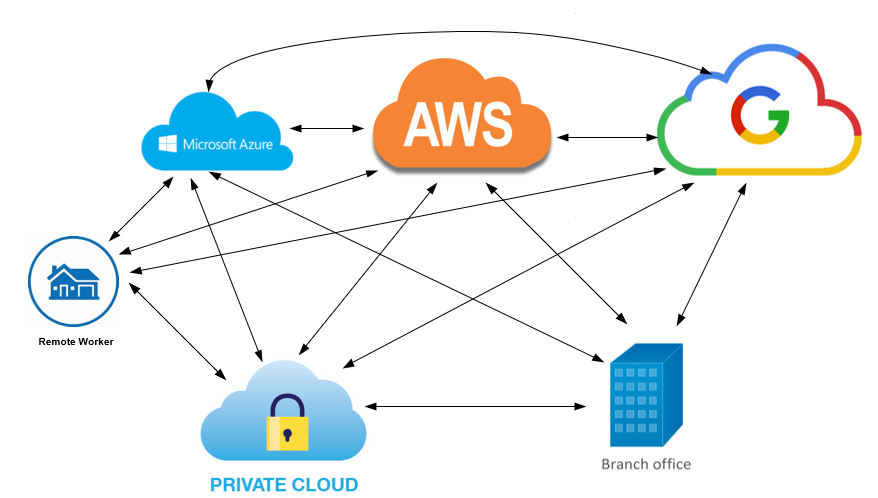
Public Cloud providers have had a profound impact on the Information Technology landscape. Few would argue otherwise. Over the years we have observed greater and greater adoption of services offered by various cloud providers. As adoption has grown many lessons have been learned, new and old. For instance, managing the relative unpredictable cost of public services has been a learning curve for most, whilst the lessons of yesteryear make good old vendor lock-in a concern for some decision makers.
Cloud providers compete by offering new and improved services and offering short to medium term discounts, because of excess capacity. As a result, depending on any given set of requirements and circumstances at a given point in time, the value proposition between respective cloud providers swings like a pendulum. Commitment to a single cloud provider, often means forgoing opportunities to leverage a service or a cost break that will provide your business a competitive advantage. However, the very nature of “cloud” enabled services means that consuming services does not necessarily mean a long-term commitment to the respective cloud provider. That is, you are not necessarily locked into a single cloud provider. As a result, you can take your workload(s) and migrate them to another provider.
Multi-Cloud is a big trend in cloud computing as enterprises want to be able to move workloads around to any provider. Multi-Cloud is an aspirational goal for many enterprises. Companies are well aware of vendor lock-in and want to abstract their applications so they can be moved across clouds.
There are numerous benefits for adopting a Multi-cloud strategy (1):
- To get best-of-breed platform and service options.
- cost savings/optimisation
- Improve disaster recovery/business continuity.
- Increased platform and service flexibility
Managing a Multi-Cloud environment on the other hand presents other headaches. Each cloud provider has their own set of technology, terminology, pricing, features, tools, command sets and so on. Hiring and managing a team with expertise across multiple platforms can become challenging and costly. There are many tools being developed to manage Multi-Cloud environments from a management, costing, analytics, visibility perspective. However, it was not until Alkira landed that we encountered the first true Multi-cloud Networking platform As-A-Service.
Alkira recently introduced the Unified “Cloud Backbone As-A-Service”, which reduces the complexity and time taken to interconnect multiple cloud providers and SaaS/Internet, with your private cloud, datacentre, campus, head office, branch office, home office etc. Offering this solution, “As-A- Service” coupled with a Network Services Marketplace via which you can choose to insert security solutions such as, Palo Alto firewalls (others coming soon) has profound value. No longer does your engineering team need to necessarily consider complex transit gateways and the various networking differences between different cloud providers and on-premise networking equipment. This is all taken care by Alkira. The flexibility of adapting your environment and the velocity at which this can be achieved because of the Alkira Cloud Network Backbone is truly compelling value.
Read more about how we can help you with Milti-Cloud Networking here or, sometimes seeing is believing. For more information contact Synnepho for a candid and no obligation discussion.
(1) 2020 IDG Cloud Computing Survey
